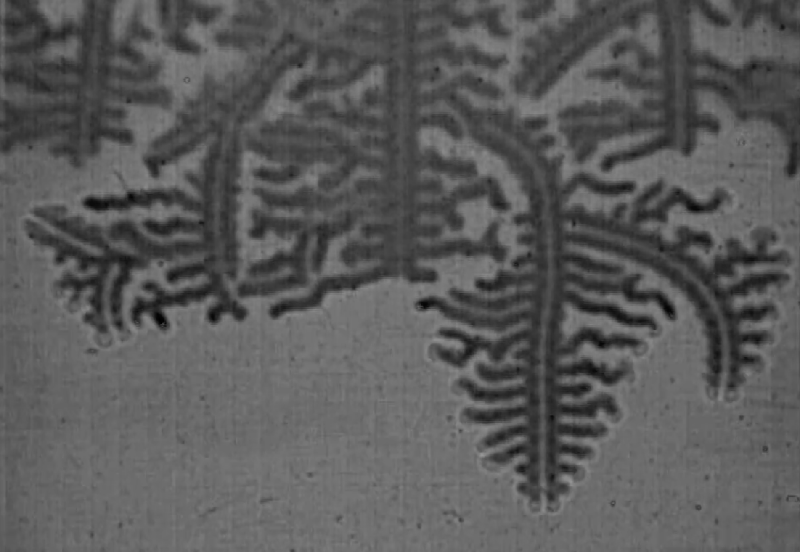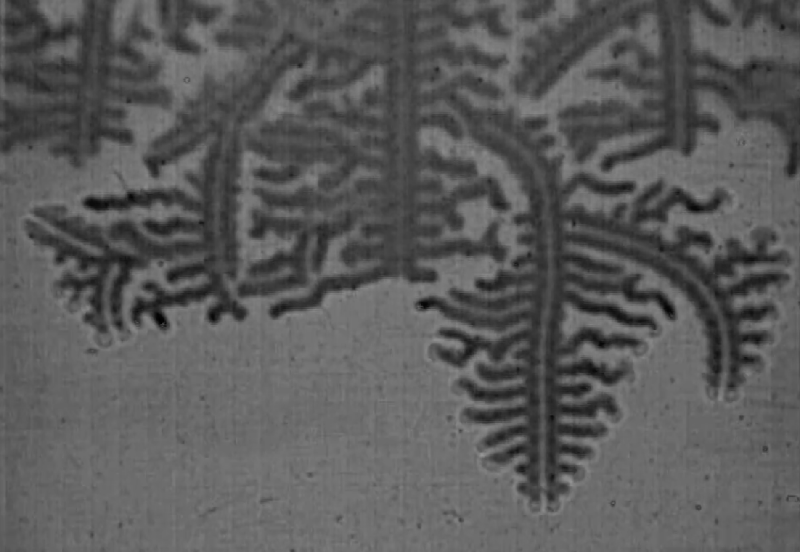Confined Flames Sprout Fingers
Using hydrogen as a fuel will help reduce carbon dioxide emissions, but storing and transporting it has risks. Researchers have now shown that the gas can burn in situations where no one expected it to. The team tested dilute quantities of gaseous fuels in a several-millimeter-wide crevice and found that hydrogen could burn steadily even when its concentration was just 5% of the confined gas. High-speed video recordings revealed that the hydrogen flame breaks apart into a fractal pattern that allows it to efficiently access fresh fuel as it burns.
The research team, led by Mario Sánchez-Sanz of Carlos III University of Madrid, filled the narrow space between two transparent, vertical plates with a mixture of air and 5–15% hydrogen. They ignited this fuel mixture either at the bottom or at the top and video-recorded the path of the flame front by visualizing the trail of condensed water left behind on the plates. With sufficiently wide gaps and large fuel fractions, a single, continuous flame front propagated upward or downward. But for certain combinations of cell thickness and fuel-to-air ratio, the flame front broke into a fractal pattern of “fingers” that left regions of unconsumed fuel between them.
The researchers ran identical experiments with two heavier fuels that were not able to remain alight under the same conditions. Using simulations, they explained the unique survival of hydrogen flames as resulting from hydrogen’s light weight, which allows it to diffuse more rapidly than other fuels. Hydrogen’s rapid diffusion was able to continually feed the flame and maintain the minimum combustion temperature as long as the flame was broken up into fingers. These results suggest that engineers designing hydrogen storage systems will need to account for hydrogen’s extreme flammability, even in narrow spaces.
This research is published in Physical Review Letters.
–David Ehrenstein
David Ehrenstein is a Senior Editor for Physics Magazine.





